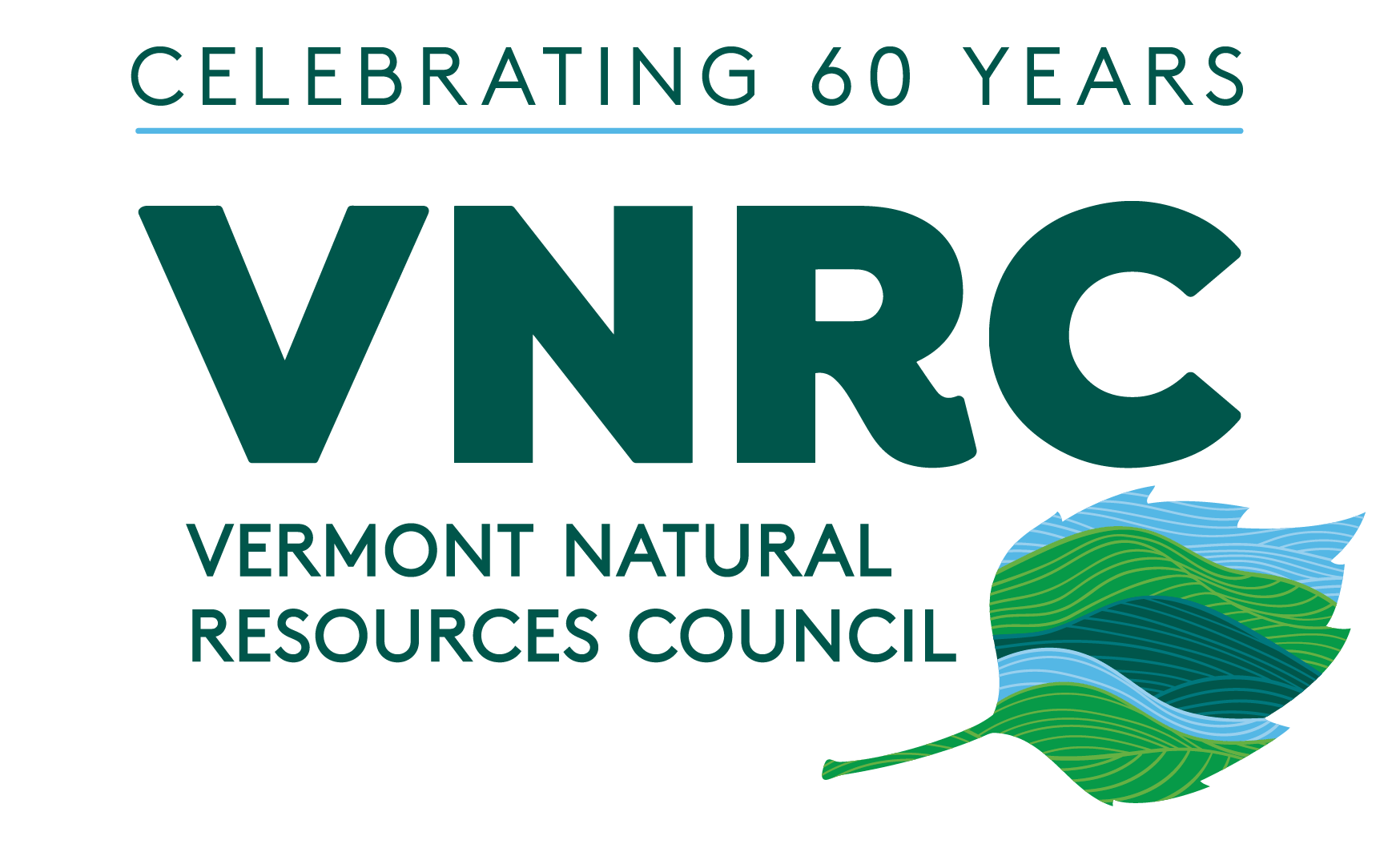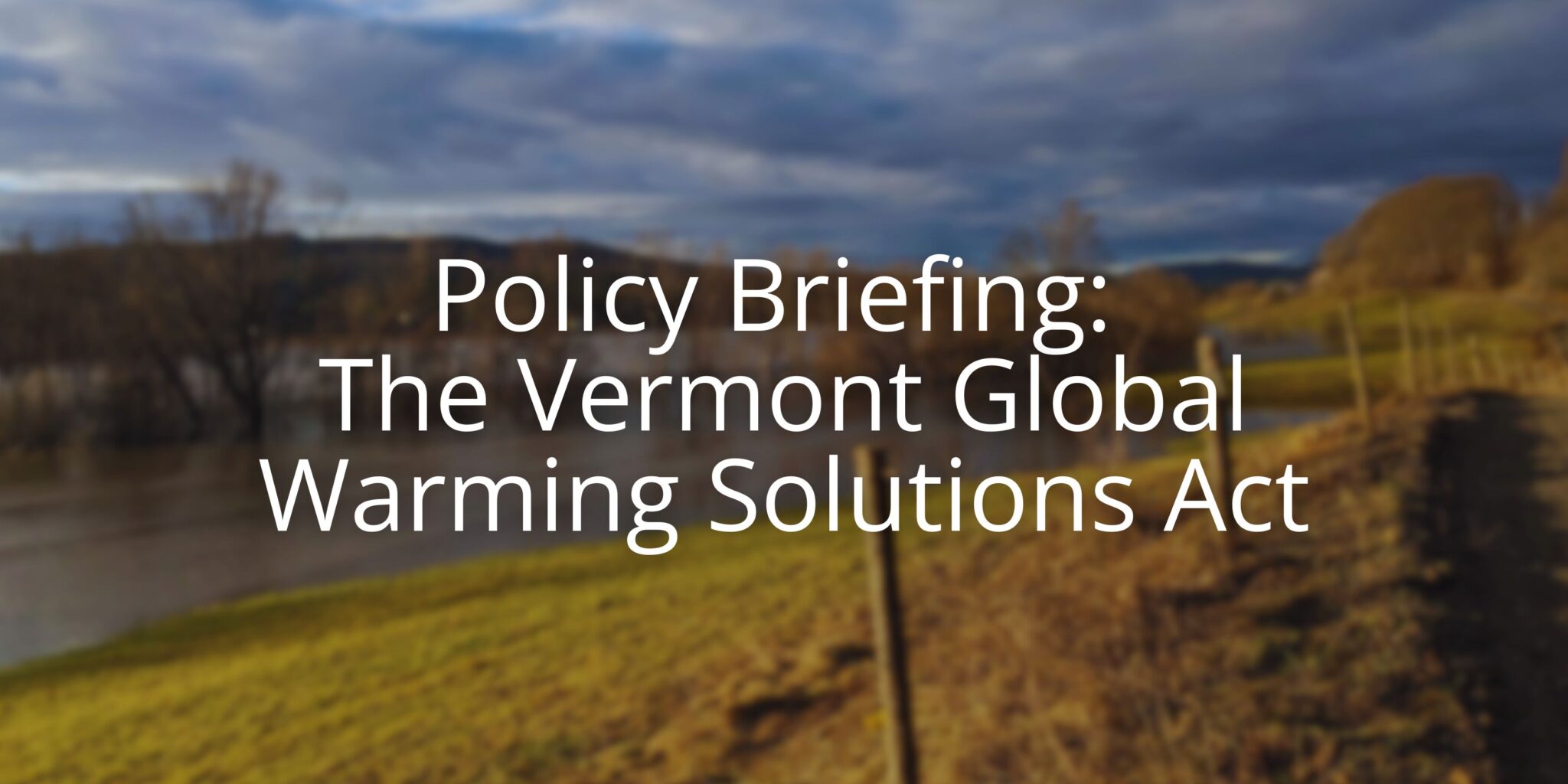We only stand a chance to avoid the worst effects of climate change if every state and nation – big or small – collectively does its part to reduce climate pollution. Vermont is no exception. Joining the many other states that already had similar laws, in 2020 the Vermont Legislature passed the Global Warming Solutions Act (GWSA). This law is the state’s legal mechanism for ratcheting down Vermont’s emissions, enhancing resiliency, and building more equity and energy affordability into state programs and policies.
This year marks the 20th anniversary of Vermont setting goals committing the state to helping tackle the climate crisis. While Vermont has taken significant steps to reduce electric bills by millions and build a cleaner, more resilient power grid, we have fallen far short on efforts that enable Vermonters to access less costly, cleaner heat and transportation. The GWSA provides the essential framework to identify and develop strategic and cost-effective policies and programs for heating and transportation.
This effort is fundamentally about the cost of living. The reality is that Vermont’s fossil fuel bill is over $2 billion a year – significantly more than our state’s annual education budget. Fossil fuels are our highest-cost and most price-volatile energy source, creating a significant strain on both family and business budgets. Fossil fuels are also 100% imported, creating a significant drain on the state’s economy. The GWSA is about saving Vermonters money, keeping more dollars in state and strengthening Vermont’s economy by shifting to more efficient, lower cost, and locally available energy choices — including with weatherization, electrification, and advanced wood heating.
We can have an energy future that saves Vermonters money while also reducing pollution; they are not mutually exclusive. That requires staying the course and implementing the GWSA to save money, cut pollution, and protect our way of life.
What is the GWSA?
The GWSA is a law that mandates ratcheting down the state’s own climate pollution by 26% by 2025; 40% by 2030; and 80% by 2050. The GWSA tasks the Climate Council and the Agency of Natural Resources (ANR) with responsibility for implementing the law. The Climate Council is a GWSA-created body comprised of the heads of eight major agencies under Governor Scott, as well as members representing specific constituencies (e.g., distribution utilities, the fuel sector, manufacturers, farmers etc). The Climate Council must adopt and periodically update a Climate Action Plan.
Where do the reduction requirements come from? Are they arbitrary?
No. They are not arbitrary. The GWSA’s reduction requirements are based on evidence from a panel of global expert scientists and are consistent with the United Nations treaty on climate change (the Paris Agreement). The U.S. committed to reducing emissions by 26-28% by 2025, 50-52% by 2030, and net-zero emissions by 2050. Governor Scott has also committed to meeting these targets. The Trump administration has vowed to walk back U.S. commitments to reducing climate pollution, making it incumbent on states to act.
What’s in the Climate Action Plan?
The Climate Council will publish an updated Climate Action Plan this summer (2025). The Climate Action Plan is a technical report with recommendations for methods to cut emissions in all major sectors. The Plan also includes recommendations for resilience and adaptation measures to help Vermont withstand the extreme weather, floods, rise in pests and diseases, and the growing economic costs caused by climate change. Critically, the plan includes a core focus on developing solutions to help all Vermonters reduce energy bills and adapt to a climate-changed world.
What is the Agency of Natural Resources required to do?
The GWSA requires ANR to look at forecasts of emissions based on Vermont’s GHG inventory to determine whether rules it has adopted are sufficient to ensure achieving the emission reduction requirements. If the state isn’t on track, ANR must course correct by updating or developing new rules. So far, ANR has adopted a suite of rules that includes California’s Advanced Clean Car II Rules, Advanced Clean Trucks, Low NOx Heavy-Duty Omnibus, the Phase 2 GHG Rule, and updated wood heater regulations. These rules help cut emissions, but we remain behind in meeting the emissions reduction requirements.
Why is it important to include enforcement provisions in the GWSA?
A law is only as good as its implementation. Without clear direction for implementation, the GWSA is merely an aspirational statement from the legislature. Even if legislation does direct the executive branch to effectuate the law by adopting regulations that translate a high-level law into detailed rules that apply to on-the-ground polluters, that directive is only useful if it is actually carried out. There is always a risk that political schisms between the legislature and the administration stymie action. To overcome that risk, it becomes that much more important that there are means for independent enforcement, i.e. citizen suits.
Isn’t there already a citizen suit filed against the state under the GWSA? Conservation Law Foundation filed a citizen suit against ANR on behalf of its members for failing to do what it’s required to do under the GWSA. CLF alleges ANR did not use a model that aligns with its own GHG Inventory for determining if the state is on track to achieve the January 1, 2025 emission reduction mandate.
What are the outcomes of a lawsuit filed under the GWSA citizen suit provision?
A court could order the state to take actions sufficient to get on track to hit the climate pollution reduction requirements of the law. Namely, a court would likely order ANR to reconduct its review and develop rules to reduce emissions. There are no monetary penalties for violating the GWSA. The suing party’s attorney’s fees could be awarded if requested, and if the court finds that doing so would serve the interests of justice. The GWSA also protects the state from superficial or baseless lawsuits against it by awarding attorney’s fees to the state from the suing party if the suit was frivolous.
Has this kind of lawsuit been filed before? If so, what happened?
Yes. Both in Vermont and in Massachusetts. In 2014, a coalition of Massachusetts-based organizations sued the state after the Department of Environmental Protection failed to adopt rules to reduce emissions as required by their Global Warming Solutions Act. That coalition succeeded, compelling the state to adopt the required rules. There is also analogous precedent for citizen enforcement achieving results in Vermont. Conservation Law Foundation’s 2008 citizen suit compelled the state to fix its insufficient Lake Champlain water quality cleanup plan (“TMDL”), which now includes a much more robust set of programs to ensure compliance with pollution controls.
How would the proposed bills amending the GWSA change its impact?
There are multiple bills proposed this session that would gut crucial provisions in the GWSA (for now, House Bills 52, 62, and 65) and generally undermine the ability to achieve beneficial outcomes for Vermonters. More are expected to be filed, including a climate omnibus bill from Governor Scott. So far, these bills include changes such as: weakening the science-based pollution reduction targets; eliminating the requirement for ANR to follow the Climate Action Plan; removing the citizen suit provision; and specifically targeting participation in California’s Clean Cars rules, revoking one of the only actions ANR has taken to meet the GWSA pollution reduction requirements.
What else is being contemplated in terms of changes to the GWSA?
The Governor has called for developing yet another Climate Action Plan in two to three years, after the next election. Vermont does not need another plan. Vermont crafted its first Climate Action Plan in 2007, under Governor Jim Douglas. In 2017, Governor Scott convened a year-long commission and tasked it with developing another plan. In 2021, the Vermont Climate Council delivered its first Climate Action Plan. Unsurprisingly, each of those three plans generally call for advancing similar solutions. What Vermonters need and deserve is action. Vermonters deserve solutions that move them off the high-cost, price-volatile roller coaster of our heavy reliance on imported fossil fuels and, instead, strategies that support people accessing and affording cleaner, more local and less costly energy options.
The Governor said we should measure GWSA with net emissions. What does that mean and why does it matter?
“Gross emissions” are the total amount of climate pollution released into the atmosphere without considering carbon removal or offsets. “Net emissions” are the total amount of emissions minus carbon removal (such as “carbon sinks” like forests or carbon capture technology). Forests make up most of the carbon sinks in VT, but emissions from forest management are often not counted, making accurate emissions accounting difficult. Governor Scott has said that Vermont should keep track of our progress based on “net emissions,” despite the fact that most states committed to the Paris Agreement use gross emissions. While Vermont’s farms and forests are critical to our economy, way of life, and greater resiliency in a warming world, changing the state’s emissions tracking from gross to net abdicates our responsibility to reduce fossil fuel consumption which, in Vermont, is pivotal to reducing energy costs.




